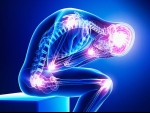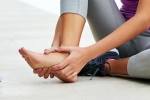Home »
Blog » Pain Management
| Stem Cell, PRP, Acupuncture in Queens & Long Island, New York
Pain Management | Stem Cell, PRP, Acupuncture in Queens & Long Island, New York
When our back hurts, we instinctively believe it’s because we’ve injured the area. After all, most pain works this way. When we cut our fingers, we see blood and feel pain. When we get the flu, our body hurts as it battles the virus. But persistent back pain is different. Decades of research prove that there simply isn’t a close connection between the condition of the spine and the likelihood of experiencing pain.
Read more
A herniated disc in the upper back, also called a thoracic herniated disc, can cause a variety of symptoms including pain, numbness, and weakness. While sharp, axial back pain that worsens with activity is most common, other signs and symptoms can include:
1-Burning and/or electric-like pain that localizes to the back or radiates circumferentially around the chest or abdomen. 2-Similar shock-like pain can radiate into the legs. 3-Sensory disturbances, including tingling and numbness, may be experienced at or below the level of the herniated disc.
Read more
Heart Attack - Arm or shoulder pain can be a sign, especially if you also have pain or pressure in the center of your chest and shortness of breath. A heart attack can be sudden, but sometimes it’s gradual. The feeling might last a few minutes, or stop and return. Your stomach, jaw, back, or neck also might hurt. You could also get sick to your stomach, lightheaded, and clammy with sweat. Call 911 if you notice these symptoms.
Read more
Find your sweet spot by learning how to push yourself, but not too far. Acute pain is pain that indicates something is wrong. It has a specific precipitant (injury, infection, or illness) and subsides within a few days to about a month. In contrast, chronic pain is pain that is ongoing; with pain signals that serve no useful physiological purpose yet remain active in the nervous system for months and often years, with no end-point. It’s not unlike a smoke detector that becomes stuck in the “on” mode, continuously sounding a harrowing alarm at high volume. Chronic pain is a disorder unto itself.
Read more
Your every day habits can play a role in developing chronic back pain. Here are a few simple things to keep in mind each day to reduce back pain. 1. Support Your Spine at Your Desk - Compared to standing, sitting places increased stress on your spine and spinal discs. So prolonged sitting with poor postures, such as slouching forward, may contribute to back pain.1 Here are a few tips to better support your lower back while you sit: Keep knees bent at about a 90-degree angle with feet flat on the ground. If needed, adjust your seat height so that your hips are about the same height as or slightly higher than your knees, which reduces stress on your lumbar spine.
Read more
Your Shoes - High heels, for example, put more pressure on the balls of your feet, which can thin your foot’s natural padding where you need it most. Avoid heels higher than 2 1/4 inches when you’re going to do a lot of walking. Flip-flops and overly pointed or flexible shoes also could lead to foot pain. You can avoid this if you match the shoe to the activity and make sure of proper fit and support.
Read more
If you have lower back pain or sciatica, you probably want to know how to relieve your pain and prevent flareups or recurrences. Avoiding bed rest and staying active can help you do both. Staying active can include a combination of strategies, such as continuing your daily activities, adding a simple exercise, such as short walks, and/or following a structured and guided exercise program. This blog explains the potential side effects of continued bed rest and the unique benefits of engaging in low-impact physical activities with back pain.
Read more
De-Stress: Standing Forward Bend - If you feel anxious or stressed, a quick time-out can help. Try this simple yoga move. Stand straight, legs together. As you breathe in, raise your arms high over your head. Bend forward at your hips as you breathe out, keeping your upper body aligned. Grasp your calves or ankles. Breathe deeply and hold about a minute. Breathe in and slowly come back up, head and arms lose and relaxed, to standing.
Read more
Like many of my own patients, you may be interested in doing more to treat pain than just relying on medications, but you aren’t sure where to start. One simple and accessible treatment to consider is something known as TENS, or transcutaneous electrical nerve stimulation. TENS is a handheld device that sends electrical impulses through small electrodes by adhesive pads attached to your skin. The pads are usually placed right on the part of your body that hurts. When the device is turned on, the electrical impulses flow into the skin and have the potential of decreasing different types of pain.
Read more
When a disc in your lower spine bulges or tears, you may feel pain in your lower back and/or your leg. Here are 3 unique signs of a herniated or protruding disc to help you identify the underlying cause of your lower back problem: 1. Pain While Sitting - An activity that exerts tremendous pressure on your lower spinal discs is sitting. If you have a herniated or bulging disc, this increase in pressure within your disc may cause the bulge to become more pronounced, which may aggravate your lower back pain when you sit.
Read more
Love this Post? Spread the World






















